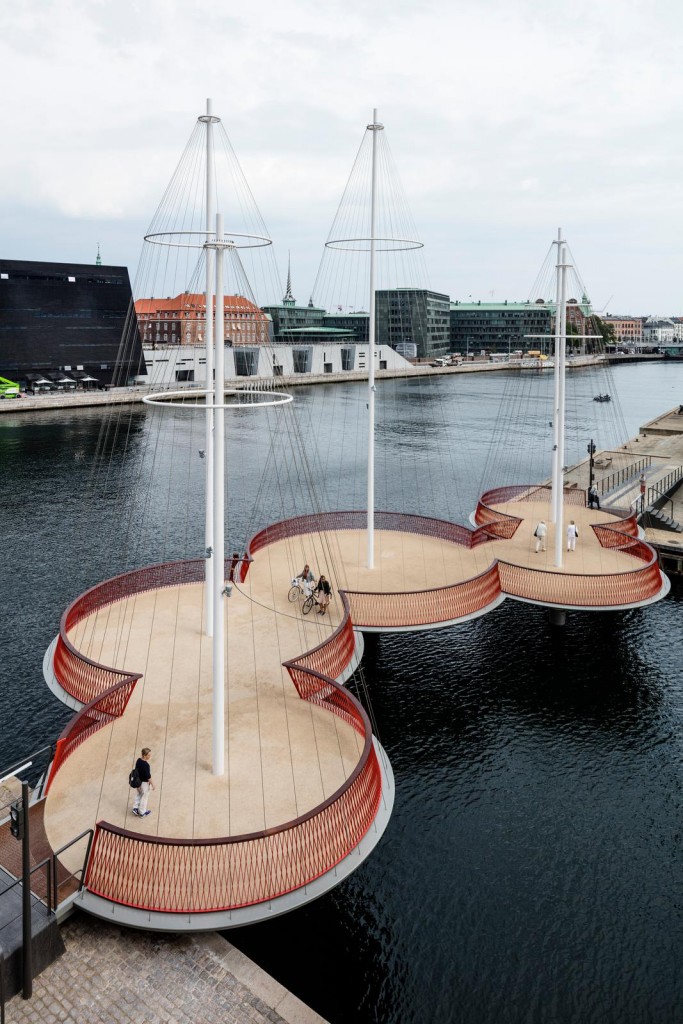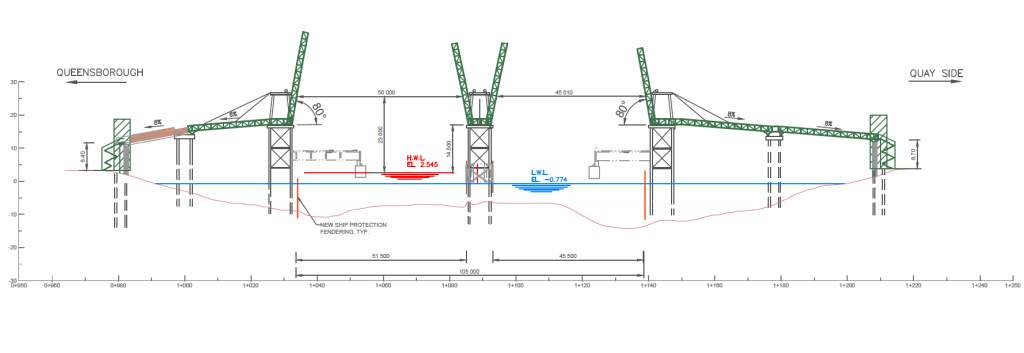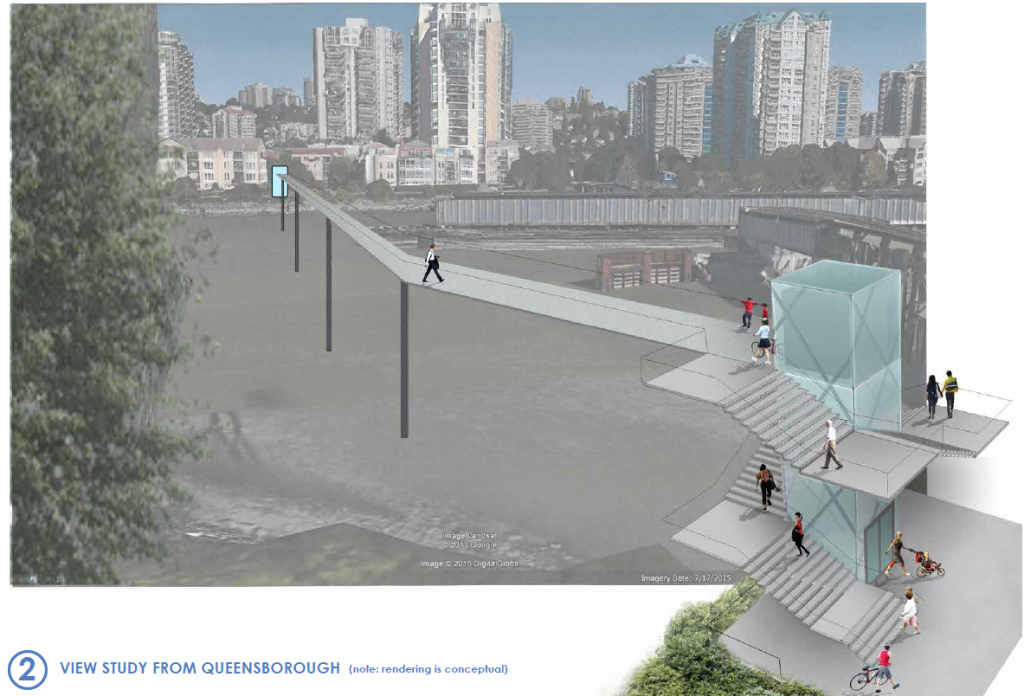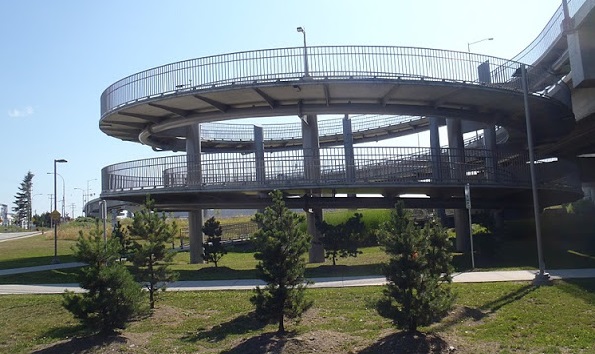The Q2Q bridge is an important project for New Westminster, and one I support. It is, however, a project with major challenges, and I am glad we are at a stage where the next phase of public consultation is taking place, so we can talk about some of those challenges, and what they mean to the City.
First off, I need to put my comments on the Q2Q into context, in relation to my position on Council.
The Q2Q concept was developed long before I was elected, even before I started to rabble-rouse in the community on transportation topics. However, I have expressed strong support for the project for years, even piping up to challenge some of the past opponents of the concept. I have always believed, and continue to believe, that the Queensborough community needs to have a reliable, safe, and accessible connection to the “mainland” of New Westminster, and that connecting the beautiful waterfront greenways of Queensborough to the Quayside boardwalk will have huge benefits for both communities. When the topic came up during the election, I was quick to say I supported the project and wanted to see it built as soon as possible.
Now that I am on Council, and am (in part) responsible for getting this project done, the brutal reality of the project has set in. The bridge some of us may dream of may not be possible in this location, and the development of palatable compromises is daunting and frustrating at times. It is becoming a lesson for me about the reality of planning for community infrastructure when a local government’s power is so limited.
If someone were to ask me what I wanted to see in a Q2Q bridge, it would look something like this:

The bridge would be approximately the elevation of the boardwalks on either side, fully accessible, would be at least 3m wide, and would have an interesting design aesthetic that creates some regional buzz when it is built. As marine traffic would need to cross, it would have an innovative swing style that was integrated in to the design, and was an eye-catcher such that the 5-minute wait for the boat to cross was not something that irritated you, but intrigued you. It would even have areas over the water where you could sit, have a picnic, drop a fish line in the water, or take photos of crossing trains, passing boats, or overhead eagles. It would also represent an easy connection for people commuting by bikes, people out for a stroll, people pushing kids in a stroller – a seamless connection across the river.
But that ain’t going to happen, because the City doesn’t own the river. Although the North Arm of the Fraser at that location is a significant industrial transportation corridor regulated by the Navigation Protection Act and Port Metro Vancouver. I cannot emphasize enough that the people who make a living moving things up and down the river would much prefer no bridge there at all, and due to the nature of the regulations, the people working the river get the say about what goes in, on, or over the river. If they don’t agree, nothing gets built.
The “they” in the case of the North Arm of the Fraser River are the Council of Marine Carriers. They use the North Arm of the Fraser to move barges, boats, booms, and all sorts of floating things. There are no alternate routes, and their business relies on it, so they are pretty motivated to keep the North Arm accessible.
If you haven’t noticed, the train bridge connecting the Quayside to Queensborough is open most of the time to marine transport, and only swings closed when a train needs to cross the river. This would not be a great situation for the Q2Q bridge if we want it to be a reliable transportation connection that pedestrians and cyclists can rely upon. We need a bridge where the default position is closed (to boats), that only swings open when the boats go by, with a cycle quick enough that it won’t cause major inconvenience for either user group.
For the bridge to operate like this, the Marine Carriers have determined a clearance of 14.5m over the water is required. This would permit enough boats to pass under without opening the bridge that a default-closed position is acceptable to the folks who work on the river. This 14.5m makes for a pretty challenging crossing for cyclists or pedestrians with mobility problems. Hence, we can’t have the bridge we want.
 The question then becomes – how do we get people up to 14.5m? A ramp that meets typical mobility-access standards (i.e. no more than 5% grade – and yes, I am aware and frightened that 8% grades are shown on the rendering) would need to be about 250m long, even longer if we add standard landings at set distances. This would be expensive, and create a long visual intrusion for the Quayside residents next to the bridge. Stairs wrapped around an elevator column would have a much smaller visual impact, and if we can avoid the design mistake that led to a completely unacceptable delay on the Pier Park elevator (yes, we can), the size and scale of that structure is a good estimate of what the bridge landings would look like.
The question then becomes – how do we get people up to 14.5m? A ramp that meets typical mobility-access standards (i.e. no more than 5% grade – and yes, I am aware and frightened that 8% grades are shown on the rendering) would need to be about 250m long, even longer if we add standard landings at set distances. This would be expensive, and create a long visual intrusion for the Quayside residents next to the bridge. Stairs wrapped around an elevator column would have a much smaller visual impact, and if we can avoid the design mistake that led to a completely unacceptable delay on the Pier Park elevator (yes, we can), the size and scale of that structure is a good estimate of what the bridge landings would look like.

I would love to see some creative alternate approaches, and we may see some coming from the engineers we hire to build the bridge. The corkscrew ramps at the southern foot of the Golden Ears Bridge seem very effective to me, and are of the same scale vertically, although I’m not sure we have the footprint area to take the same approach:

…and I have my doubts whether Port Metro Vancouver would allow us to build such a structure over top of the water. It has already been suggested that the structure as proposed would require the highest level of environmental review (“Type D”) which makes it sound like a pedestrian and cyclist bridge will somehow have a bigger environmental risk than a coal terminal or LNG export facility.
You may also have noticed the plans for the bridge shifted from being slightly upstream of the train bridge to slightly below. The upstream side as a little better for the City, as both landings work better, but the downstream was deemed safer for boat traffic. Unfortunately, this means the landing on the Queensborough side is going to be much more complicated (read: expensive) to build.
Alas, we are stuck with what we have. I can complain about an industry group having more power than an elected local government about how our river is used, but as we learned in the Fraser Surrey Docks coal terminal discussions, the Port does not answer to local governments, but to their own mandate, and Sunny Ways are not likely to shift their business model any time soon.
So we will do what we can to build the most accessible, most convenient, and most user friendly bridge within the constraints given us, even if it isn’t as elegant as one we might see in a place like Copenhagen.
As the person who hears more daily comments (and criticisms) than anyone on the Quay, the one question that keeps on coming up to me is why the above factors were not considered before now? It has been an 8 year process of planning, with now 4 different revisions, but yet we are still without a suitable solution. There was some initial backlash to the idea, but as the project was revised, a very reasonable solution presented, before December than almost everyone agreed to, but why was there not some understanding of the Marine Carriers requirements before now? The shocking contrast of the December design is nothing like what was expected, doesn’t meet the basic guidelines of the conceptual purposes and is once again leaving people disgruntled and disappointed. “Footprint” should not be the word used. We should be considering the Contextual Impact of the structure. 14 meter glass elevator towers, cement stairs and high-angled ramps are not in keeping with the surrounding pedestrian/cycling brick walkways that flow naturally with the river, allow for growth of vegetation and nesting grounds for ducks and geese, and are welcoming to residents and visitors. The residential developments on both sides of the river used those same designs to integrate modern urban living naturally to the ebb and flow of the river, with minimal intrusion, well-thought out integration into the surroundings. The concept, the design process and the planning appeared to be meeting the needs of all (or so we thought) and after some revision there was an agreed plan that very well satisfied the residents, used unique and innovative designs that reflected the surroundings, was presented to the public as being the agreed design and was much anticipated. Without preparing the residents and without the above reasoning stated, it was shockingly altered and presented to the surprise of all a few weeks ago. From all the questions and criticisms are clear to me since. Why were the Marine Carriers requirements not brought forth and considered in the initial stages of design? The impact and contrast of the new structure is not welcomed by the residents. The design and placement will create many barriers to use by various groups (seniors, families, cyclists, pedestrians with pets or those with limited mobility) and its’ placement is such that it creates multiple bottlenecks for times of high use. I am usually a very open resident, proactive and compromising in understanding why some things might not always be exactly what we want them to be, but I have to reflect the feeling of many I have spoken with and myself on this one. The requirements of the Marine Carriers could and should have been foreseen in the long process, and I feel betrayed by being led on over an extended period of time. This is not what was planned, intended or presented to the public. A metaphorical description has come to mind to summarize the collective thoughts of those with whom I’ve spoken with over the past month: “This feels like the pile of scraps left over from the Anvil Centre and the Queensborough Community Centre are being hastily thrown together by those who strung us along for with false promises for almost 10 years”. Sorry Patrick, but I have to be honest in my thoughts.
Thanks Ken, for your (always appreciated) thoughts, and your honesty. You raise several good points, so I would rather reply with a follow-up post than a comment here. Coming soon…
Actually, I’m closing comments on this string, as I wrote a longer answer to Ken here, and if you feel the urge, you can comment there. I just don’t want to have to manage two conversations on the same topic!